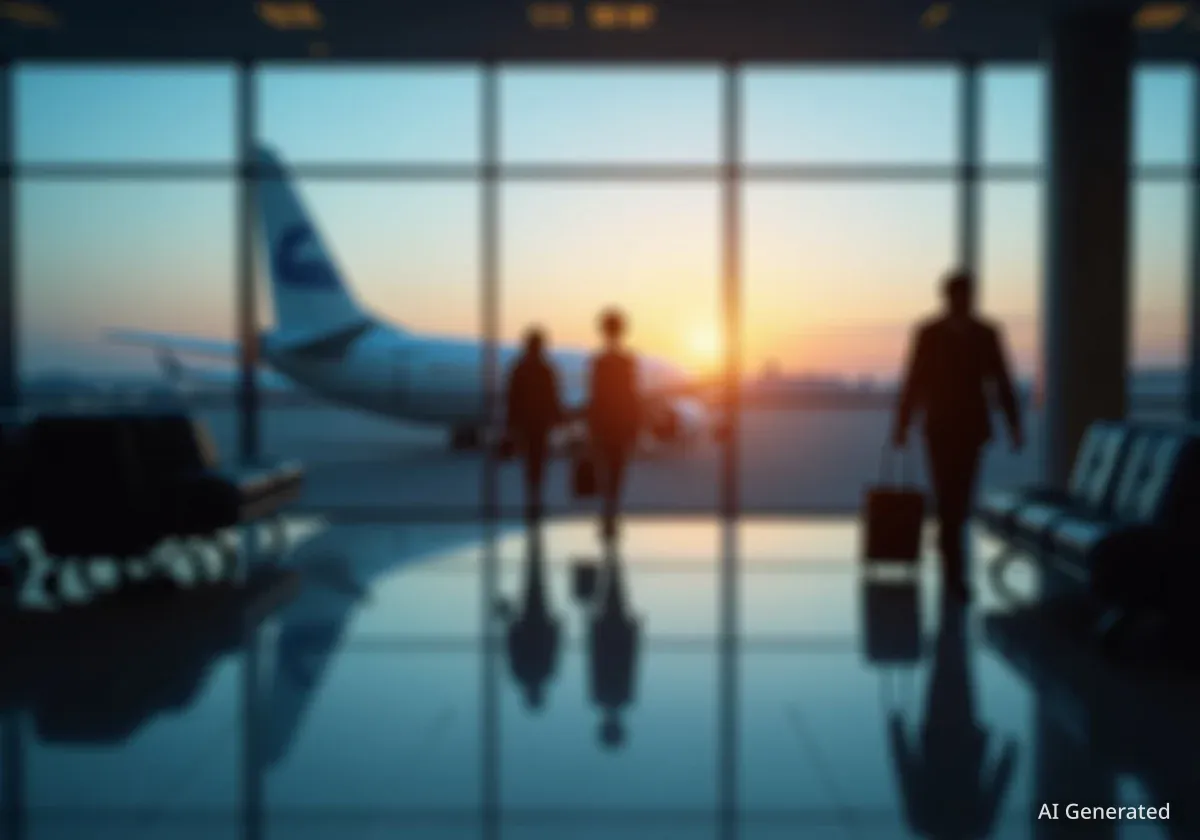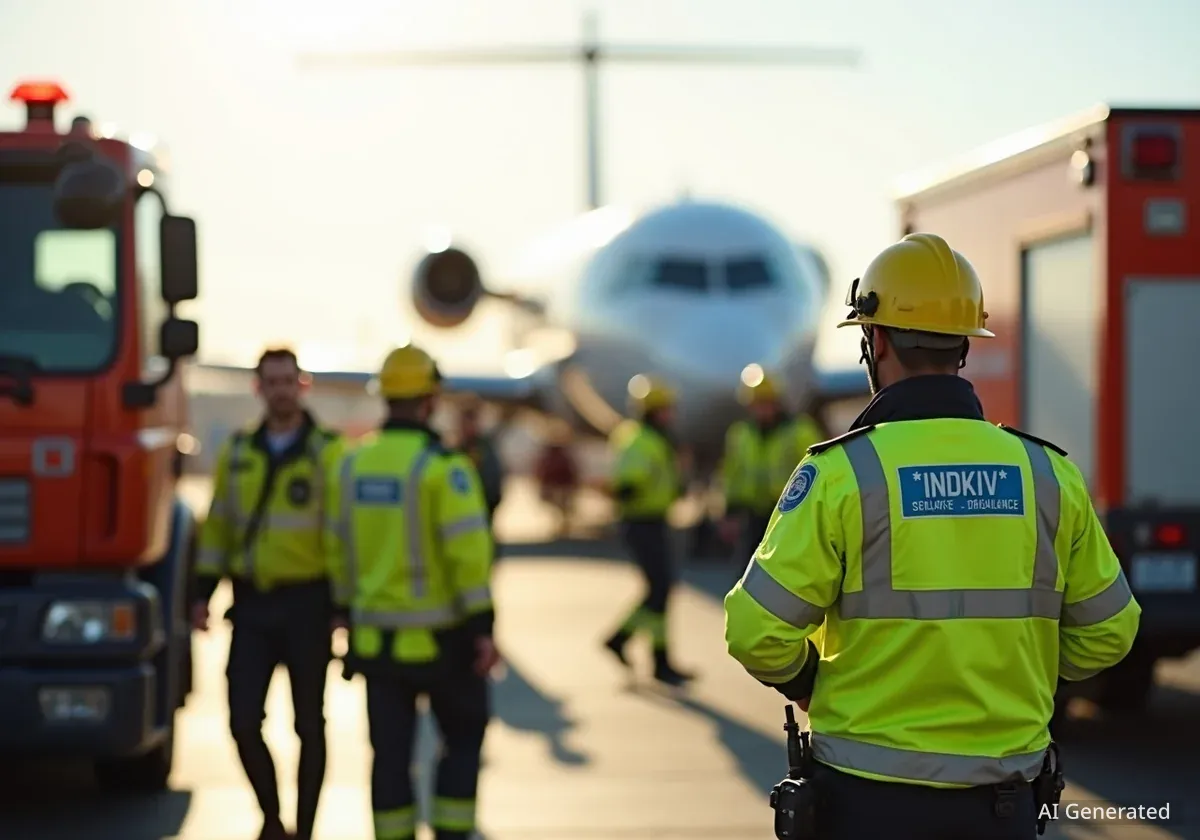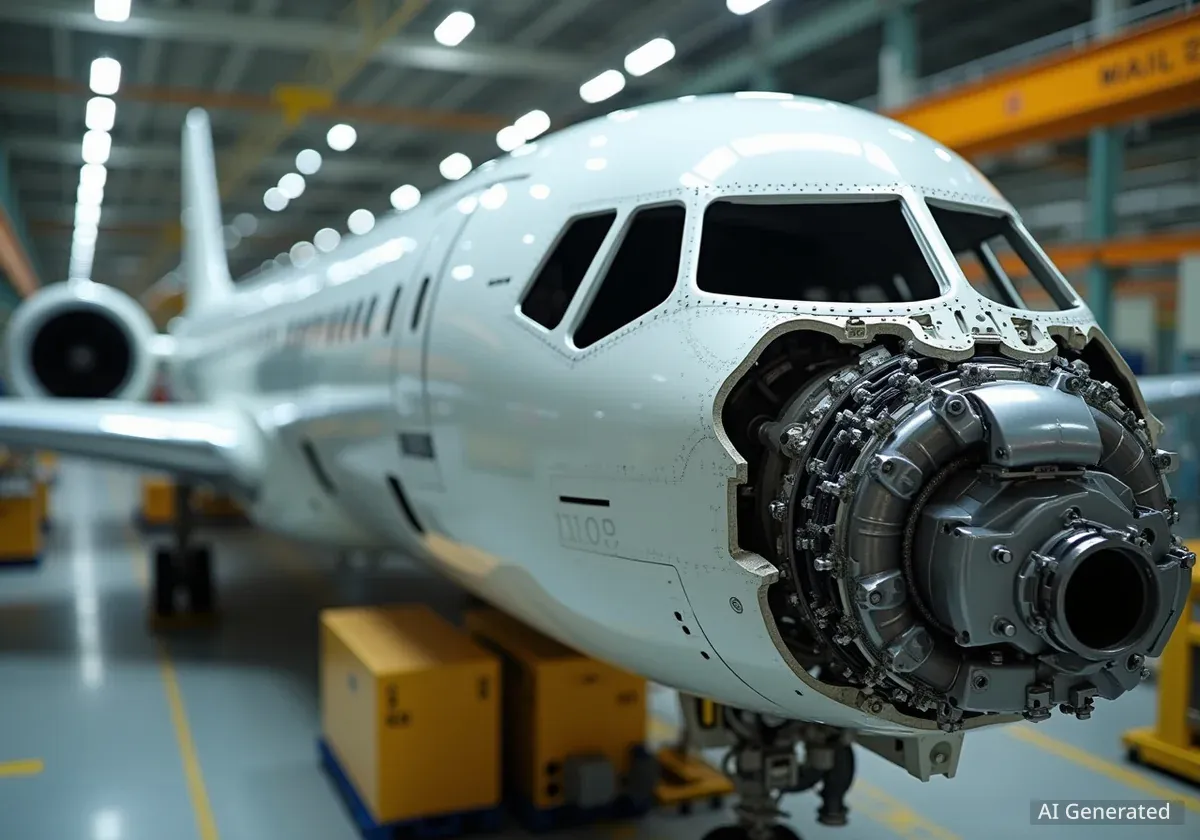A Delta Air Lines international flight from New York to London Heathrow made an emergency landing in Boston after experiencing a power loss in one of its engines. Flight DL1, carrying 250 passengers, was diverted to Boston Logan International Airport (BOS) after the crew shut down the left-hand engine mid-flight. The aircraft, a 24-year-old Boeing 767-400ER, landed safely, and all passengers disembarked without incident.
Key Takeaways
- Delta Flight DL1 from New York to London diverted to Boston.
- The crew reported a loss of power in the left engine.
- A 24-year-old Boeing 767-400ER aircraft was involved.
- All 250 passengers landed safely in Boston.
- The aircraft resumed service after inspection.
Flight Incident Details
The incident occurred on Friday, September 26. Delta Flight DL1 departed from New York John F. Kennedy International Airport (JFK) at 9:05 PM, which was 35 minutes later than its scheduled departure time of 8:30 PM. The flight was en route to London Heathrow Airport (LHR), one of Europe's busiest air travel hubs. The expected arrival time in London was 8:50 AM the following morning.
Approximately 120 nautical miles (222 km) east of Boston, the flight crew noticed a significant power reduction in the aircraft's left engine. They immediately contacted air traffic control to report the issue and request assistance.
Flight Facts
- Flight Number: DL1
- Route: New York JFK to London Heathrow
- Aircraft Type: Boeing 767-400ER
- Aircraft Registration: N840MH
- Passengers Onboard: 250
- Diversion Airport: Boston Logan International Airport (BOS)
Emergency Procedure and Landing
During the aircraft's ascent phase, the crew identified the engine power loss. According to reports from AvHerald, they requested to initiate a drift-down procedure while investigating the problem. A drift-down is a standard safety measure. It involves the aircraft descending to an altitude where its remaining engine can provide sufficient thrust to continue flight safely.
Following this procedure, the crew decided to shut down the affected left engine. They then declared an emergency and requested an immediate landing at the nearest major airport, which was Boston Logan International Airport. Emergency response teams were notified and prepared to meet the aircraft upon its arrival.
"The crew acted swiftly to ensure passenger safety, following all emergency protocols for an engine power loss," a source close to the incident noted.
The Boeing 767-400ER, registration N840MH, landed safely on runway 33L at Boston Logan. This landing occurred approximately 45 minutes after the emergency declaration. Upon arrival, the pilots requested emergency crews to inspect the aircraft's brakes for any signs of overheating. After a thorough check, the brakes were cleared, and the aircraft proceeded to the apron.
Delta Air Lines Overview
Delta Air Lines, with IATA Code DL and ICAO Code DAL, is a full-service carrier founded in 1929. It is a member of the SkyTeam alliance and has multiple hubs across the United States. Key hubs include Boston, Detroit, Atlanta, Los Angeles, Minneapolis-St. Paul, New York JFK, LaGuardia, Salt Lake City, and Seattle-Tacoma. Ed Bastian serves as the CEO.
Aircraft Inspection and Return to Service
The aircraft, N840MH, remained at Boston Logan International Airport overnight. Delta Air Lines ground maintenance crews conducted a detailed investigation to determine the cause of the engine power loss and ensure the aircraft's airworthiness. This extensive inspection was necessary before the plane could be cleared for further flight.
The diversion and subsequent overnight stay of N840MH in Boston led to the cancellation of the return flight, DL2, from London Heathrow to New York JFK. All passengers booked on this cancelled flight were reaccommodated on other available services.
The aircraft was eventually cleared to return to New York. It operated as flight DL9967 on Saturday, September 27, departing Boston at 5:36 PM. The flight was a short 42-minute hop, landing at JFK at 6:31 PM. Further details on the aircraft, according to ch-aviation, confirm its first flight date as March 7, 2001, and delivery date as May 23, 2001, making it 24.6 years old at the time of the incident.
Aircraft Specifications (N840MH)
- Serial Number (MSN): 29718
- First Flight Date: March 7, 2001
- Delivery Date: May 23, 2001
- Age: Approximately 24.6 years
- Aircraft Variant: Boeing 767-432ER
Following the thorough inspections and repositioning, the Boeing 767-400ER was reintroduced into Delta's regular operations. It resumed scheduled flights on Sunday, September 28. Its first post-incident flight was DL742 from New York JFK to Los Angeles International Airport (LAX). This flight operated without any reported issues. Since then, the aircraft has continued to operate without incident, including several transatlantic flights and a rotation to Paris, France.
Previous Incidents Involving This Aircraft
This particular 24-year-old Boeing 767-400ER has a history of mid-flight issues. Delta Air Lines plans to eventually replace these older Boeing 767 aircraft with newer models, such as the Airbus A350-1000 and A330neo.
One notable previous incident occurred on Monday, September 7, 2009. The aircraft was operating a flight between New York JFK and Venice Marco Polo Airport (VCE). Approximately two hours after takeoff, passengers and crew experienced flickering cabin lights and the deployment of oxygen masks on the left side of the cabin. A sulfur smell was detected, though no smoke was visible.
The flight was diverted to St. John's (YYT) in Canada. The landing was uneventful. A subsequent investigation revealed the cause: fractured wires in the forward lavatory. A wire bundle had been incorrectly routed, leading to chafing over time. This exposure of conductors resulted in an electrical short. Repairs were made, and the aircraft was returned to service.
Previous Incident Summary (2009)
- Date: September 7, 2009
- Route: New York JFK to Venice Marco Polo Airport (VCE)
- Issue: Flickering cabin lights, oxygen mask deployment, sulfur smell.
- Diversion: St. John's (YYT), Canada
- Cause: Fractured wires and an incorrectly routed wire bundle in the forward lavatory, leading to an electrical short.
The continued operation of older aircraft by airlines like Delta and United has been a point of discussion among aviation enthusiasts and industry observers. These airlines often maintain their fleets to high standards, with rigorous maintenance schedules. However, some passengers express a preference for newer aircraft.
For example, one commenter noted, "I prefer flying by newer aircraft. No B747, 757, 767, A340, A330." Another countered, "They are more fun to fly though. The sounds of old engine and also why not a330 neos?" The debate highlights varying perspectives on aircraft age and passenger experience.
Despite the age of some aircraft, airlines such as Delta and United have extensive knowledge and experience in maintaining these planes. An industry observer mentioned, "Delta and United will probably keep the 767s flying to 2030. You see almost as many 767s at Heathrow as Delta's and United's hub airports in the US. The technicians at DAL and UAL know this aircraft as well as Boeing does." This suggests a high level of technical expertise supports the continued operation of these fleets.





